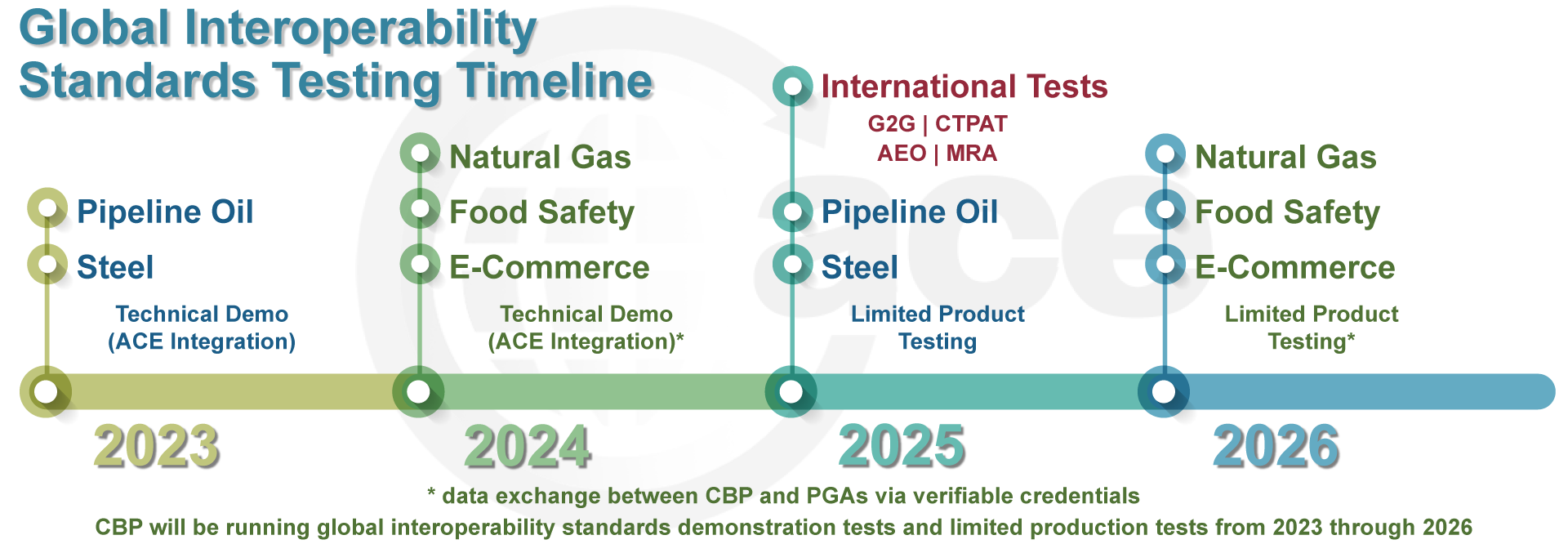Interoperability: the ability of different computer systems and software to communicate with each other.
Interoperability Standards: detailed descriptions, or blueprints, that guide software development and enable different systems to connect and exchange data.
Decentralized Identifier (DID): a globally unique identifier for companies, people, and products with a secure, encrypted key that prevents people from stealing it.
Verifiable Credential (VC): a tamper-proof, digital vehicle in which data is received to allow systems to verify authenticity and validate legitimacy of the company and product being imported.
Digital Twin: a virtual representation of an object or system designed to reflect a physical object accurately – what the object is, who is in control of it, and where it is geographically located. A digital twin spans the object’s lifecycle and is updated from real time data.
Partner Government Agency (PGA): a division of the federal government that regulates specific products imported/exported to the United States along with CBP.
CBP is testing global interoperability standards in the trade environment in collaboration with the DHS Science and Technology Directorate (S&T), Silicon Valley Innovation Program (SVIP). Specifically, CBP is testing decentralized identifiers (DID) and verifiable credentials (VC). When used in tandem, DID and VC support development of digital twins, which provide a virtual representation of what the item/good is, who is in control, and where it is geographically located throughout the supply chain.
Through the SVIP, CBP is engaging partner government agencies, standardization bodies and a cohort of private sector partners to conduct a series of tests in five project areas: pipeline oil, steel, food safety, natural gas, and e-commerce. For more information about each project area, select the corresponding button below:
-
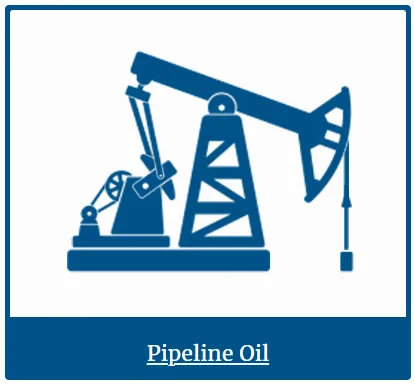 CBP is working with Neoflow on its pipeline oil project to accomplish the following:
CBP is working with Neoflow on its pipeline oil project to accomplish the following:- Affirm free trade status no matter how many times oil is sold on the open market.
- Improve traceability of crude oil shipments.
- Offer real time tracking of in-bond movements.
- Assist CBP validation of United States-Mexico-Canada Agreement (USMCA) claims.
- Offer enhanced reporting between CBP and Department of Energy.
- Ensure proper classification and duty collection.
-
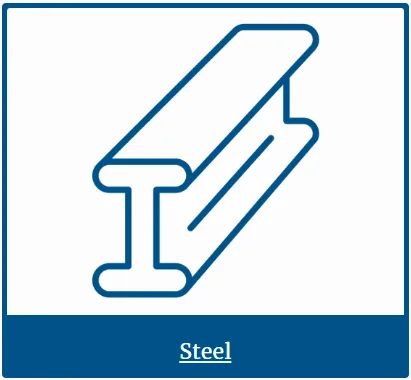 CBP is working with Transmute on its steel project to accomplish the following:
CBP is working with Transmute on its steel project to accomplish the following:- Make the supply chain visible, traceable, and verifiable from manufacturers to U.S. consumers.
- Use verifiable credentials (VC) to trace the origins of steel imports with near real-time verification of mill test reports at time of manufacture.
- Assist CBP validation of United States-Mexico-Canada Agreement (USMCA) claims.
- Use VCs to verify the identities of parties issuing and receiving digital shipping credentials.
- Improve identification of misclassification of steel scrap/waste shipments.
- Ensure proper classification and duty collection.
- Reduce errors and fraud associated with paper documentation.
For more information on this project, check out:
-
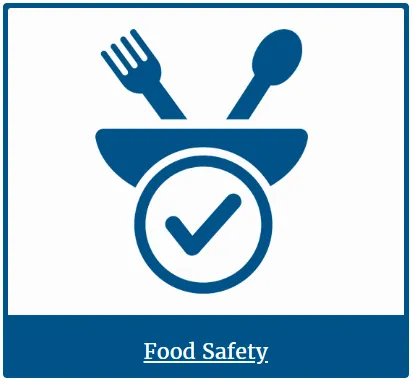 CBP is working with Mesur.io on its food safety project to accomplish the following:
CBP is working with Mesur.io on its food safety project to accomplish the following:- Track perishable goods from farm to import, thereby enhancing the visibility of food supply chains.
- Enable the application of appropriate duties.
- Allow the identification of packing materials used in shipping food products.
- Reduce spoilage and waste.
- Reduce paper documents.
- Expedite inspection times.
-
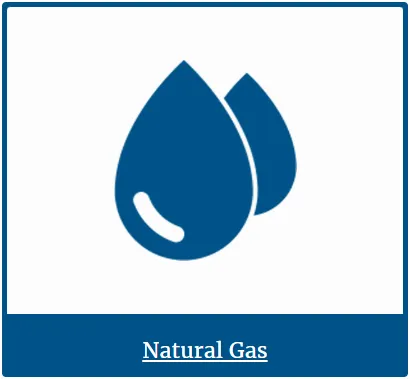 CBP is working with Neoflow on its pipeline natural gas project to accomplish the following:
CBP is working with Neoflow on its pipeline natural gas project to accomplish the following:- Improve traceability of natural gas shipments to facilitate origin determination.
- Offer real time tracking of in-bond movements.
- Allow paperless identification of private sector and government actors related to natural gas exchange.
- Enhance reporting between CBP and the Department of Energy.
- Eliminate goods entering from prohibited countries.
-
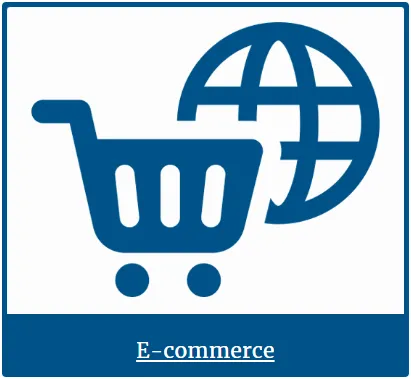 CBP is working with Transmute to track small packages using Verifiable Credentials to accomplish the following:
CBP is working with Transmute to track small packages using Verifiable Credentials to accomplish the following:- Make the supply chain visible, traceable, and verifiable from online retailers to U.S. consumers.
- Use verifiable credentials to verify the identities of parties issuing and receiving digital shipping credentials for regulated goods imported under U.S. de minimis regulations.
- Ensure that importers comply with CBP and other U.S. government agency requirements.
- Ingest data from online marketplace entities.
- Receive pre-arrival and pre-release information.
- Reduce errors and fraud associated with paper documentation.
- Prevent the import of harmful goods, including illicit or counterfeit goods.
For more information on this project, check out the Transmute and CBP e-Commerce Tech Demo.
CBP’s testing and technical demonstrations of global interoperability standards are scheduled to take place over 2 years, during which CBP seeks to achieve the following objectives:
- Adopt interoperability standards,
- Expedite the acquisition of data,
- Increase transparency of supply chains,
- Accept data from traditional and non-traditional actors, and
- Promote transparency and security throughout the trade process.
Testing Timeline
In August 2023, CBP successfully completed an initial technical demonstration of global interoperability standards in the trade environment. Three cohort companies working with CBP through the SVIP converted standard data from participating companies in the steel and pipeline oil sectors into verifiable credentials. The VCs were then transmitted to CBP, resulting in faster data collection, much earlier in the import process. Overall, the results supported CBP’s ability to:
- Secure confidential trade information storage and transmission.
- Provide simultaneous access, validation, and record updating.
- Enable continuous supply chain traceability across a network of entities and locations.
For more information about the initial testing, see: www.cbp.gov/newsroom/national-media-release/cbp-initiates-interoperability-standards-test-improve-supply-chain
In 2024, CBP is pursuing additional testing in the natural gas, e-commerce, and food safety sectors. CBP is engaging partner government agencies and international standards groups to:
- Focus on pre-arrival data and building transparent supply chains by developing digital twins.
- Test the ability to verify the origin of credentials and issue credentials.
- Test the ability to transmit VC data to PGAs.
- Test "provisional messaging” in the single window system, which will provide trade an early indication of the status of their freight.
International testing is scheduled to occur in 2025, and will include 3 technical demonstrations:
- Global Government-to-Government (G2G) Exchange Network – An automated framework based on traceable presentations, global interoperability standards, and immutable ledger technology that allows trade data exchange among Authorized Economic Operator (AEO) partners.
- Global AEO CTPAT Credential – Exchange Customs Trade Partnership Against Terrorism (CTPAT)/Authorized Economic Operator (AEO) credentials between countries to prove CBP can issue and exchange credentials in a globally interoperable manner.
- My Export is Your Import – Countries will exchange bill data to verify goods have exported.
These projects are establishing the foundation for ACE 2.0, CBP’s current effort to modernize the Automated Commercial Environment (ACE). ACE 2.0 will build upon the existing Automated Commercial Environment (ACE) system to close existing capability gaps and add new functionality to implement the next generation business processes envisioned by the 21st Century Customs Framework. For more information visit our ACE 2.0 page at Envisioning ACE 2.0 | U.S. Customs and Border Protection.
Return to BTID Landing page www.cbp.gov/trade/ace/Innovation







